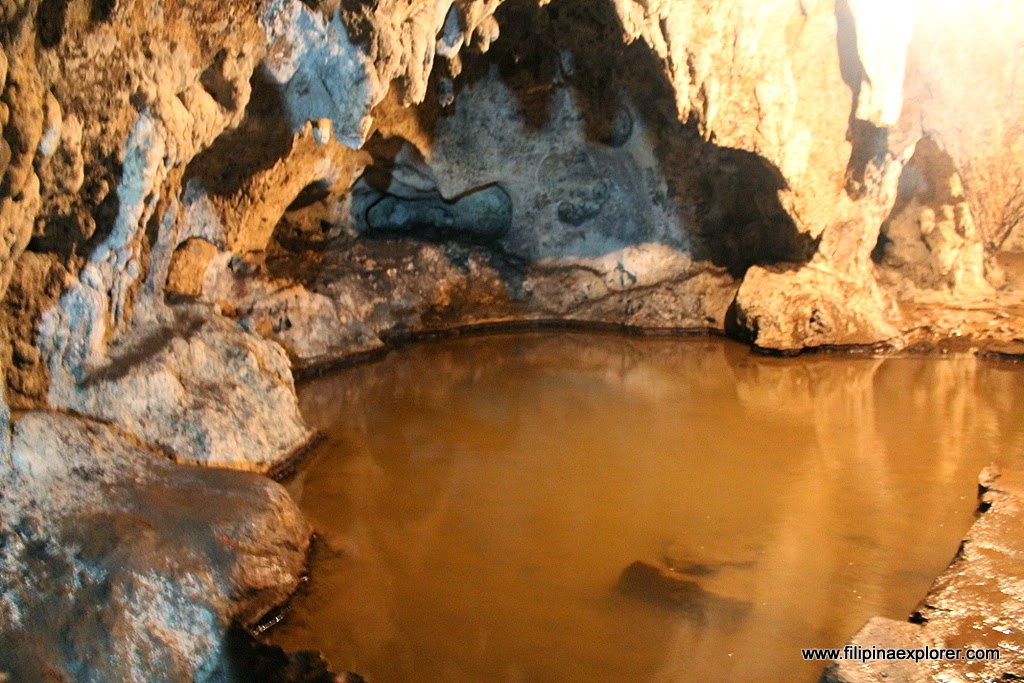Hordes of NPAs. Slippery moss-draped floors. Deep dark forests and snakes. Dangerous and too distant for a rainy day destination, and for an all-women group (almost) at that.
Such were the outpouring comments elicited by locals and relatives when they learned we were heading for Camalig’s Hoyop-Hoyopan Cave on a drizzling day. For them, such “unfriendly” cave was not one any right-minded individual with a toddler and a senior should explore.
But because we are all quite stubborn women – from my mother down to my toddler – we took the 1-hour drive from Daraga to Camalig nonetheless and what we discovered surprised us.
 |
| Not exactly psycho thriller material. |
You know those warm and muted barns that only Pinterest can spawn? Well, that’s the kind of sight that receives visitors in Hoyop-Hoyopan. On such dreary day, the grass-strewn lands are teeming with livestock, happy visitors and congenial locals tending to their produce and for sale-souvenirs. Images that are the opposite of those psycho thriller ones previously evoked in mind.
 |
| A makeshift dance hall used by locals for secret parties during the Marcos dictatorial regime. At the far-end (that small hole in the middle) is a lookout cum escape route. |
We trekked a short semi-rubble trail up to the entrance where a DOT-accredited local guide and his mutt Whitey met us for a 45-minute tour of the cave system’s second tier. There are three tiers, but only the middle is open to visitors. The claustrophobia-inducing first and third levels can only be explored by advanced spelunkers – mostly by crawling – in a total of 22 hours, one which guides greatly discourage.
All first-timers to spelunking (if you could call it that), we pored over the magnificence of mineral deposits and re-learned a neat word trick in mineral formation positions: ceiling for stalactites, and ground for stalagmites.
…And also watched our guide lick droplets of rain dripping from the stalactite’s pointed tips. “Safe and pure,” he assures. “Rainwater from the mountain gets filtered by the minerals.” I trust him, but seeing that swiftlets and bats have made it their home – the ubiquitous guano a testimonial to that- uhm, no thanks.
 |
| Cave entrance |
Surprisingly, the ground stays just mildly damp, not wet, despite the rain. In fact, for many centuries that Hoyop-Hoyopan Cave stood in Albay’s lands, it has NEVER been flooded, making it a preferred TV and film shooting location and a strategic hideout for Filipino soldiers during the Japanese era; and in current times, for some typhoon-stricken locals amid mega storms.
 |
| Swiftlet nest. This sells for a crapload of pesos in the country. |
It’s naturally equipped with small ventilation pockets too, so despite the abundance of guano, the smell is almost nil. It was that breeze that lent the cave its name, too: Hoyop, Bicolano for ihip, or to blow.
Amid the small ponds of water and beautifully eerie formations ranging from a hand to religious figures, we asked our guide,“So, do you really have NPAs here?”
 |
| Hand of God, they call it. Visitors are encouraged to make a wish and plant their foreheads against the hand for luck. |
“No”. He smiled and led us past the makeshift dance hall to a lookout that overlooks lowlands encroached by grass and dark, beautiful ponies. “You see that mountain over there?,” he inquired, pointing to a tall mound across the cave. “We believe they reside at the top of that mountain. But in the many years I’ve been a guide here, I have never come across an NPA. Neither did the others.”
If NPAs are your thing, Calabidongan Cave at the farther tip of Camalig (a two-kilometer trek from Hoyop-Hoyopan) offers that, he jested.
 |
| Lookout at one end of the cave. |
We grinned all the way to the car. We wanted to gloat to nay-sayers, hey, we made it there and we did find what we were looking for: zero NPAs, zero snakes and moss.
Is it a destination not fit for women and tourists? Absolutely not. Is it a dangerous destination at all? No more than any other point on the map, I’d say.
 |
| Whitey, you are missed. |
In any place there’s always danger lurking. Bees, a plane making the wrong landing, skydivers falling out of parachutes, pickpockets passing by, a bus that accidentally slipped down the highway, gas leaks, a mini stroke. Those frightening possibilities always exist. Everywhere, all the time.
Should one remain cloistered for life to keep safe, or as Virginia Woolfe points out, “find peace by avoiding life”?
 |
| Skull-like figure on the cave ceiling. If you look closely, you’ll see bats hiding in those eyes. |
The real danger is deeming a destination unsafe without first-hand experience, based only on hearsay. Because not only does that lead to missed opportunities for discovery, it also leads to lost income for locals who are relying on tourism for livelihood.
Travel notes:
- Entrance fee is P300 per group of 6; P500 exceeding that. Comes with one guide per 6 persons and fewer.
- The guide will also tell you this, but just in case you forget to pay attention, please, don’t touch those blingy minerals along the way. It destroys their natural blingyness.
- No need to bring a flashlight. Every guide comes equipped with one.
- Trekking sandals/ shoes not necessary, but preferable. The floors tend to get wet when it’s raining.
- Souvenirs are available by the cave’s entrance and down by the parking lot. Definitely way cheaper at the parking lot.





